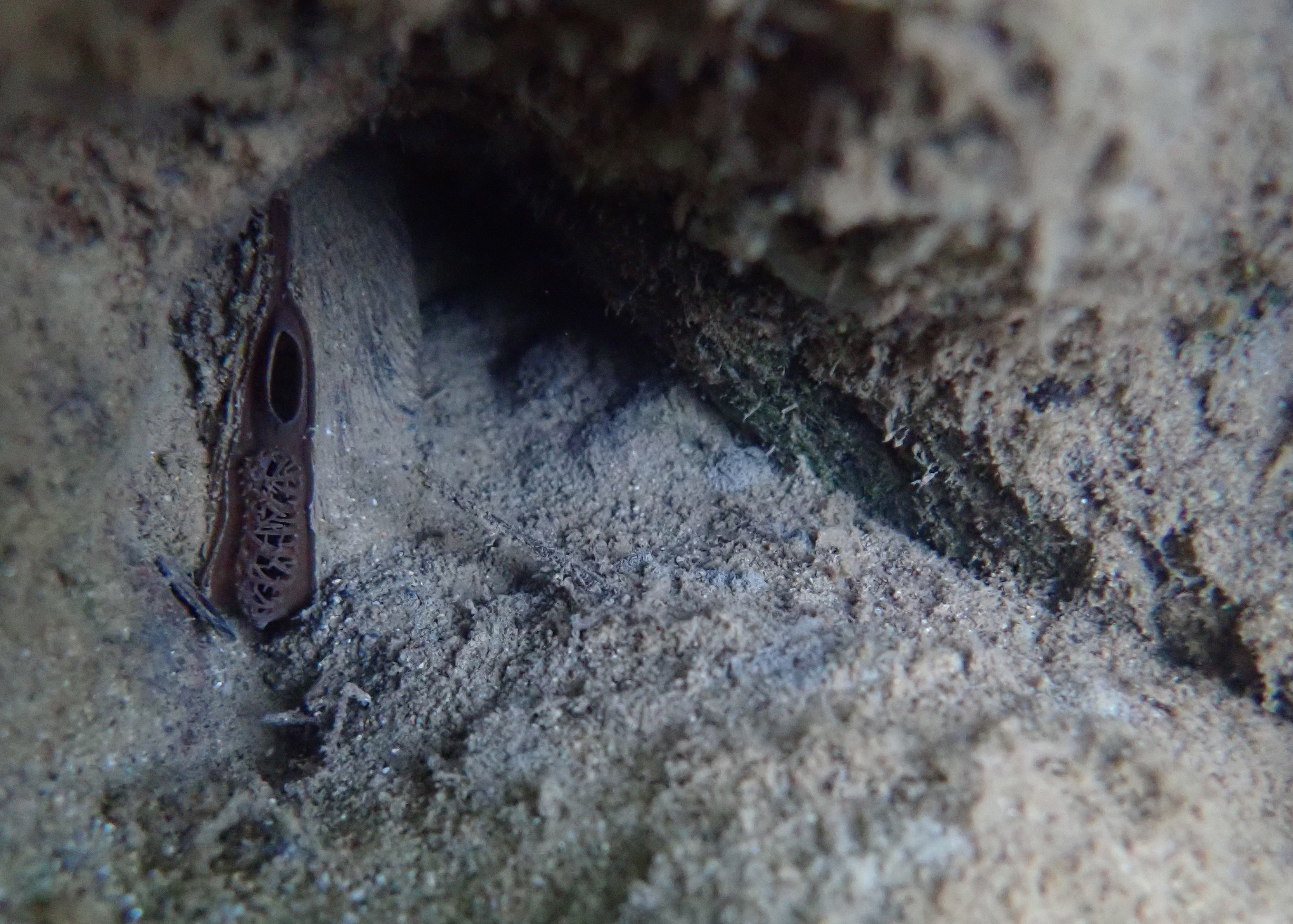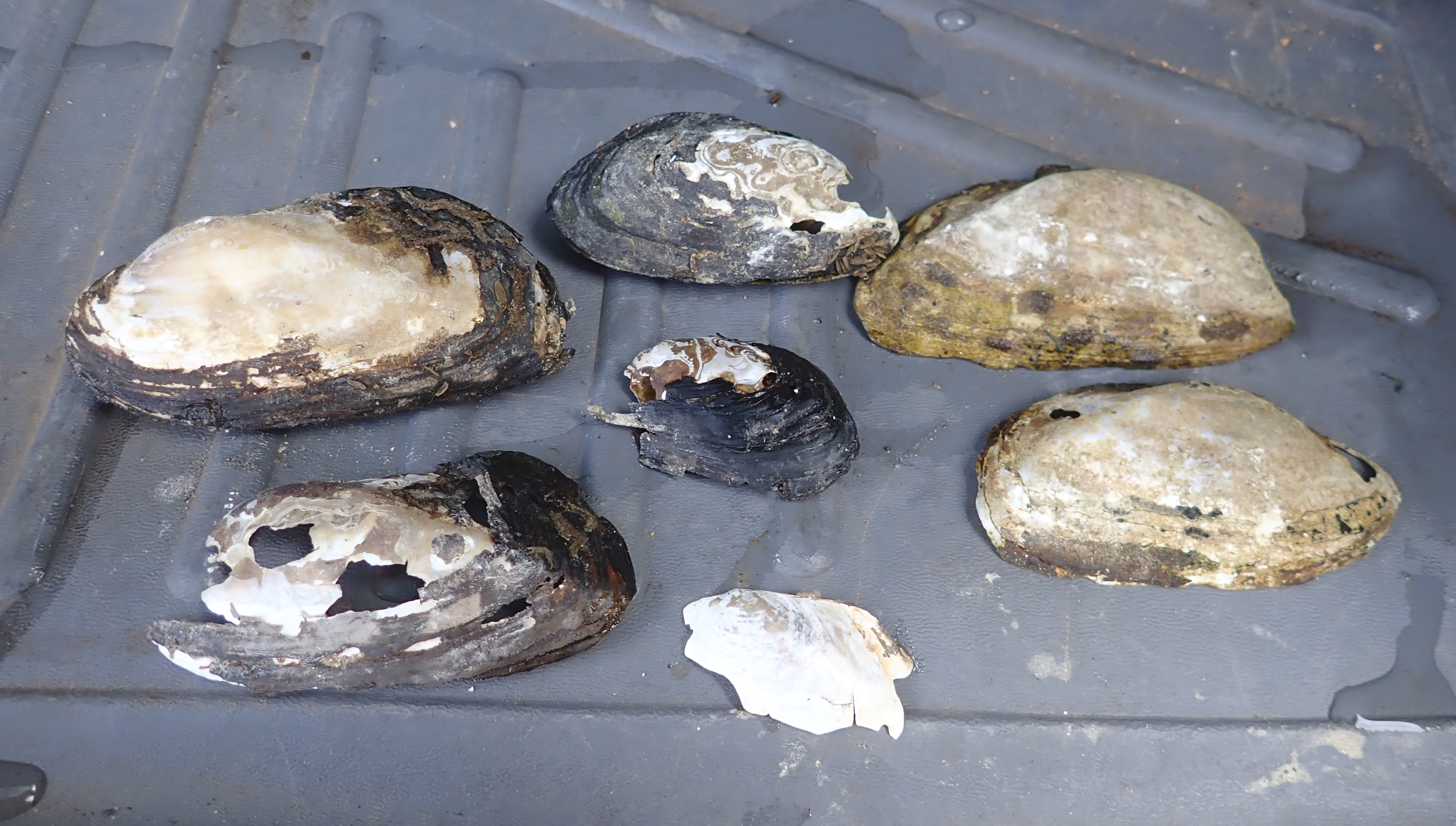The western ridged mussel (Gonidea angulata) is one of just a few species of freshwater mussels native to North America west of the Continental Divide. This mussel can live for many decades in our rivers and streams, and is the only living member of its genus, making it unique among North America’s freshwater mussel fauna. Sadly, the western ridged mussel has declined over much of its range and faces numerous threats where it still occurs, bringing it to the point where it is at risk of extinction. The Xerces Society has submitted a petition to secure much-needed protections for this freshwater mussel species under the federal Endangered Species Act (ESA).
Freshwater mussels, as a group, are among the most imperiled species groups in the world. If listed, the western ridged mussel would join more than 90 other mussel species in the United States (of the 300 or so species that live, or once lived here) that are already listed under the ESA, with the hope that it will not also join the 30 or so North American species that are now extinct. With a tenth of the country’s mussel species already lost forever, the stakes are high, and yet, there is still an opportunity to provide meaningful protection to the western ridged mussel.

One of the few western ridged mussels still found alive in the Chehalis River, Washington state. Enigmatic die-offs have devastated mussel beds in the Chehalis River, as well as several other Pacific Northwest rivers. (Photo: Xerces Society / Emilie Blevins.)
Historically, the species once occurred as far south as San Diego County in California. Yet, even as early as 1912, malacologists (scientists who study mollusks such as freshwater mussels and snails) warned that our management of lakes and rivers would soon lead to the extirpation of mussel species from southern California. Now, more than 100 years later, the western ridged mussel faces not just a contraction of its former range—though as predicted, it has not been seen in rivers south of San Francisco Bay, despite multiple surveys—but extinction.
Among the many threats the species faces, one of the most concerning is the recent occurrence of die-offs. As we documented in our petition, thousands of western ridged mussels may perish over the course of one or just a few years from as-yet unknown causes. Research into these die-offs by Xerces Society scientists and biologists at the US Fish and Wildlife Service, US Geological Survey, and University of Wisconsin–Madison, have identified an association with a novel virus. This virus, as well as other factors, may decrease the resiliency of western ridged mussel populations, and further research and conservation action is critically needed to clarify the cause, or causes, of the die-offs, so that remaining populations may be protected.
Amidst this emerging threat remain myriad others, which impact not just the western ridged mussel, but also many aquatic species. These threats include water abstraction, poor water quality, habitat destruction, climate change, inadequate protection from recreational harvest and other impacts, and introduction of invasive species. In many places, western ridged mussel beds have disappeared without anyone noticing, until all that remains are the empty shells.

Careful surveys often fail to find any live western ridged mussels at sites where they were likely once abundant. At this site in the Crooked River basin of Oregon, 9 shells and shell fragments are the only evidence that the species was once present. (Photo: Xerces Society / Emilie Blevins.)
Freshwater mussel beds, like old growth forests, can provide a lesson in persistence. The mussel bed you or I observe in a river is likely the same bed, with perhaps even some of the same individuals, that our parents or grandparents would have encountered had they stood (or swam) from the same vantage point decades before. Yet, at the current rate of decline, our children, and their children, too, may not be able to experience western ridged mussels. No live mussels have been found at nearly half of the historic western ridged mussel sites that have been revisited in recent years, and at many more sites where this species still persists, a surveyor can often count just a handful of live mussels despite hours of searching. Though some rivers may as yet appear strongholds for the species, the threat of emerging die-offs and extinction looms large without protection. As a result, our conservation work for the species has been from the (river) bottom up: conducting surveys to fill data gaps; working with other biologists and land and water managers to identify and protect fragile mussel beds, especially during in-water river restoration and construction work; and investigating causes of mysterious die-offs. But this has not been enough to ensure viability of the species into the future. To date, listing under the ESA has averted extinction of more than 200 species of plants and animals, an outcome we hope will also extend to the western ridged mussel.
In 2017, Xerces Society biologists were overjoyed at finding a single live western ridged mussel in a tributary of the Chehalis River, where mussels are threatened by a die-off. Unfortunately, since 2017, western ridged mussel populations in the Chehalis basin have continued to decline. (Photo: Xerces Society.)
Most people will never encounter a western ridged mussel, and many may wonder why we should be concerned by the potential extinction of this species, an animal that has no brain or eyes, makes no sound, and is easily mistaken for a rock or noticed not at all. However, these “living rocks” perform incredible feats: filtering gallons of water every day to the benefit of cleaner, clearer water you may later draw from the tap; enhancing river bottoms to support fish and the many invertebrate species that serve as fish food; and serving as food to other species like river otters. They also have been and continue to be a species culturally important to several tribes in western North America. From the ground up, freshwater mussels touch many lives, from the smallest among us to the communities we live in.
We all can do our part to help conserve the western ridged mussel, and indeed many species of freshwater mussels. Maintaining natural streamside and riverine habitat, minimizing chemical use, reducing water use in our home or garden, helping stop introductions of invasive species like zebra mussels or aquarium pets, and supporting watershed protection and restoration efforts in your area—these are all ways to care for the habitats and ecosystems that support freshwater mussels. Through our combined efforts, future generations may be fortunate enough to stand by or float over the same mussel bed as the generations before.
Further Reading
Read the Endangered Species Act petition submitted to the US Fish and Wildlife Service
Learn more about Xerces’ mussel protection efforts
Download a handy guide to Freshwater Mussels of the Pacific Northwest
Find detailed conservation guidance in Conserving the Gems of Our Waters




